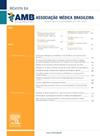Frailty and its associates in community-dwelling older adults
IF 1.3
4区 医学
Q2 MEDICINE, GENERAL & INTERNAL
引用次数: 0
Abstract
SUMMARY OBJECTIVE: While the literature contains several studies on the frailty assessed during hospitalization and/or outpatient settings and nursing homes, few studies have assessed frailty in community-dwelling older adults. We investigated the prevalence of frailty and associated factors among older adults in a sample of community-dwelling older adults. METHODS: We included community-dwelling older adults >60 years living in the Fatih District of the Istanbul Province. We conducted the study between November 2014 and May 2015. We collected the data such as age, sex, number of diseases and drugs, functional status, frailty, the presence of geriatric syndromes, common diseases, and quality-of-life assessment. Frailty was evaluated by the FRAIL scale. RESULTS: A total of 204 adults (mean age: 75.4±7.3 years) were included, of whom 30.4% were robust, 42.6% were pre-frail, and 27% were frail. In multivariate analyses, associated factors of frailty were the number of drugs [odds ratio (OR)=1.240, p=0.036], the presence of cognitive impairment (OR=0.300, p=0.016), and falls (OR=1.984, p=0.048). CONCLUSION: The present study established the prevalence of frailty in a large district in the largest metropolis in the country through a valid screening method. Our results suggest that clinicians should consider frailty evaluation in patients with multiple drug usage, cognitive impairment, and falls.社区居住老年人的虚弱及其相关因素
摘要目的:虽然文献中包含了一些关于住院和/或门诊环境和疗养院中虚弱评估的研究,但很少有研究评估了社区居住老年人的虚弱。我们在社区居住的老年人样本中调查了老年人中虚弱的患病率和相关因素。方法:我们纳入了居住在伊斯坦布尔省法提赫区>60岁的社区老年人。我们在2014年11月至2015年5月期间进行了这项研究。我们收集了年龄、性别、疾病和药物数量、功能状态、虚弱、老年综合征的存在、常见疾病和生活质量评估等数据。用虚弱量表评估虚弱程度。结果:共纳入204例成人(平均年龄75.4±7.3岁),其中健全性30.4%,体弱前期42.6%,体弱期27%。在多因素分析中,衰弱的相关因素是药物的数量[优势比(OR)=1.240, p=0.036]、存在认知障碍(OR=0.300, p=0.016)和跌倒(OR=1.984, p=0.048)。结论:本研究通过一种有效的筛查方法,在全国最大的大都市的一个大地区建立了虚弱的患病率。我们的研究结果表明,临床医生应该考虑对多种药物使用、认知障碍和跌倒的患者进行虚弱评估。
本文章由计算机程序翻译,如有差异,请以英文原文为准。
求助全文
约1分钟内获得全文
求助全文
来源期刊
CiteScore
2.20
自引率
0.00%
发文量
276
审稿时长
12 weeks
期刊介绍:
A Revista da Associação Médica Brasileira (RAMB), editada pela Associação Médica Brasileira, desde 1954, tem por objetivo publicar artigos que contribuam para o conhecimento médico.

 求助内容:
求助内容: 应助结果提醒方式:
应助结果提醒方式:


